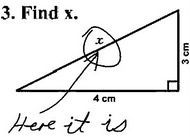Wall Street Journal on Katrina #1
Anatomy of a Flood: 3 Deadly Waves
by Jeff D. Opdyke, Evan Perez And Ann Carrns For The Wall Street Journal
September 7, 2005
NEW ORLEANS -- On Aug. 29, as Hurricane Katrina brought chaos to this city, three massive waves of water poured largely unseen into the eastern section of town and neighboring St. Bernard Parish.
One surged west, off a churning Lake Borgne. Another came across from Lake Pontchartrain in the north. That sent a steel barge ramming through the Industrial Canal, a major shipping artery that cuts north to south through the city, possibly scything a breach that became 500 feet long, letting waters pour into nearby neighborhoods.
The waves inundated the mostly working-class eastern districts, home to 160,000 people. In some places, the water rose as fast as a foot per minute, survivors say.
Until now, the world's attention has focused on the levee system protecting the city's central districts, and on the near-anarchy in the storm's aftermath. But a complete reckoning of the damage and death toll will likely focus on an entirely different event, hitherto overlooked: the devastating swamping of the eastern sections of New Orleans, hours before the central flooding began. The final tallying of the dead across the city will be substantially dictated by how many residents of these neighborhoods got out alive.
The floods in eastern New Orleans [raise] new questions:
- Why were the levees lining the Industrial Canal and parts of Lake Pontchartrain to the east lower than in other parts of the city?
- Should residents near Lake Borgne have been more clearly warned that the lake could rise so furiously?
- Are the levees outside the city limits sufficient to protect parts of the city that few tourists ever visit?
- Should shipping companies be required to do a better job of securing barges and vessels?
To the north, water poured through black and Vietnamese neighborhoods closer to Lake Pontchartrain, where another 96,000 people lived. ... large numbers of people in these areas had not evacuated. Many ... particularly older people or the poorest residents without transportation or cash for hotels, say they couldn't comply. Other residents here adamantly refused to take shelter in the Louisiana Superdome, where crowds had become unruly during previous hurricanes.
With Stanley P. Stewart, a 49-year-old mechanic ... were 13 family members ranging in age from 4 to 71. "Where was I going to go?" Mr. Stewart said later. "I'd like to ask the mayor how you take 14 people with no finances and book them in a hotel. It's not that we didn't leave. It's that we couldn't leave."
The 5½-mile-long Industrial Canal ... is a crucial waterway for vessels carrying petroleum products, industrial chemicals and oil-field pipes because it connects the river to the Gulf Intracoastal Waterway, which in turn leads to the Gulf of Mexico.
Time and heavy use have taken a toll on the canal [built in the 1920s] ... Barges and ships were routinely delayed because of growing traffic levels and the lock was "literally falling apart at the hinges" in 1998, according to a U.S. Army Corps of Engineers report, which called it an "antique" and recommended replacing it.
The Corps of Engineers concedes some of its levees in the area "have settled and need to be raised to provide" the level of protection for which they were designed, according to a fact sheet on the Corps's Web site dated May 23, 2005. But federal budget shortfalls in fiscal 2005 and 2006 "will prevent the Corps from addressing these pressing needs."
Hurricane Katrina's storm surge -- the wave of water pushed ahead of a hurricane by its furious winds -- raced across Lake Pontchartrain. As it did so, the canal became the delivery vehicle for the first wave that would destroy the Lower Ninth Ward. Just before the water began rising, a surge hit the mouth of the Industrial Canal. The Corps of Engineers says a lock operator reported seeing water from the lake pouring over 15-foot walls on each side of the canal.
As storms approach New Orleans, owners of ships, tugboats and freight barges that populate the city's port and waterways attempt to secure their crafts. ... Removing the barges from the area entirely is impossible. "There is nowhere to go," Mr. Peterson says.
As the hurricane rolled into New Orleans, scores of boats broke free or sank. In the Industrial Canal, the gush of water broke a barge from its moorings. ... It hurtled into the canal's eastern flood wall just north of the major street passing through the Lower Ninth Ward, leading officials to theorize that the errant barge triggered the 500-foot breach. Water poured into the neighborhood.
As the water roaring out of the Industrial Canal turned the streets of eastern New Orleans into rivers, the same areas were hit from the other side by the storm surge coming off Lake Borgne. Engineers say the estimated 20-foot surge also appeared to overflow levees just north of St. Bernard Parish. Shrimp boats were dumped in a marshy section between Lake Borgne and the city.
Technorati Tags: Katrina



 A few of my daughter
Melina's great posts:
A few of my daughter
Melina's great posts:








1 Comments:
Jimmy Johnson, the cartoonist who writes Arlo and Janis has some very interesting pictures and commenst on his website www.arloandjanis.com. He is a memeber of the Pass Christian, MS community.
Bill
Post a Comment
<< Home